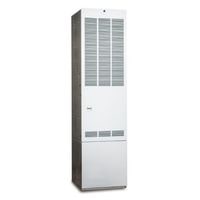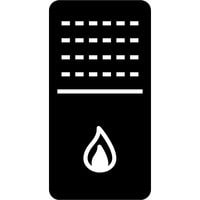Intertherm Furnace Troubleshooting. Furnace blowers are popular among homeowners and heating and air conditioning repairmen. The blower or fan circulates heat from the Intertherm furnaces throughout the ventilation of the home so that warm air is distributed throughout the house.
In some cases, you may need to repair your Intertherm furnace because it stays on constantly.
This problem can be caused by several things, including faulty components in your Intertherm furnace. More serious furnace issues may require a professional’s help.
Intertherm Furnace Troubleshooting

In this article, we discuss how to troubleshoot some problems with the Intertherm furnace.
Intertherm Furnace Blower Won’t Stop
The wall thermostat has electrical contacts that control the power supplied to the furnace. If the contact that controls the blower motor sticks closed, it will send continuous voltage to the blower motor, causing the motor to run continuously.
To determine if the thermostat is defective, use a multimeter to test it for continuity.
If the wall thermostat shows continuity between the R and G terminals when the thermostat is in the off position (meaning it’s not controlling any power supply in this case as it should), then this would mean that your thermostat has failed and will need to be replaced.
The furnace has a control board that manages the flow of power to each different device inside of the unit, which includes the blower.
The blower is activated using a relay that regulates the voltage to activate it. If the relay for activating the blower is shut for an extended period of time and then reopened.
It may flood the motor with current causing it to run continuously. Faulty heat controller boards often cause these issues and need replacing.
Intertherm Furnace Blower Won’t Run
The capacitor, once fully connected to the motor and fan shaft, might become damaged and start to emit an unpleasant ear-piercing high-pitched whine.
A motor with a defective capacitor will most likely overheat or not run at all. The capacitor can also act up once suddenly disconnected from the circuit board itself.
Since capacitors have a limited life expectancy of a few years, it’s important to check them regularly.
The blower motor blows warm air through the return vent, past the heat exchanger, and into the home’s venting. First, make sure that power is getting to the motor.
If power is getting to the blower motor but it does not run, there may be an obstruction in the motor or it could be burned out.
If either of these is true and/or if the blower fan does not spin freely when turned manually by hand, you will need to replace it.
Intertherm Furnace Won’t Regularly Work
If the pressure switch is not working properly, for example, it doesn’t experience a change in state when the proper airflow arrives, then it won’t close which will result in a grandiose flame.
If there is too much pressure, it can be released by removing some fuel by either reducing the temperature or closing off some of the burners to allow air to flow into the furnace more easily during ignition.
If this attempt doesn’t work, one can also try cooling down the pressure switch with a cool wet rag or replace a part of its circuitry if testing proves to be futile.
The flame sensor keeps on monitoring the burner to detect whether or not a flame is present. As soon as it detects that there is no flame, it will shut off the power and cause the furnace to stop heating up.
However, sometimes, if it’s dirty, and won’t be able to notice a flame we might see that the furnace does not heat up.
Therefore you better clean it with some fine abrasive pad for better results, and if this doesn’t change anything then you need to buy a new one.
Intertherm FurnaceWon’t Heat
The gas valve allows the hot air from inside the furnace to escape into your home. If the gas valve is defective, it prevents the hot air from flowing out and eventually causes the heater to fail or malfunction.
To determine if the valve needs to be replaced, use a multimeter to see if it has continuity by using one lead on each terminal.
If the gas valve does not have continuity then gas cannot flow through it and will need to be replaced.
The igniter gets very hot and glows bright orange to light the gas flame. If the igniter fails or cracks, your furnace won’t heat up.
To determine if it’s faulty, remove it and inspect it for cracks. If the igniter is cracked, replace it. If the igniter is not cracked, use a multimeter to test the igniter for continuity.
The wire in the new igniter should have continuity when hooked up with the multimeter – if not, it may need to be replaced or repaired by a professional.
Intertherm Furnace Troubleshooting
Related Guides
